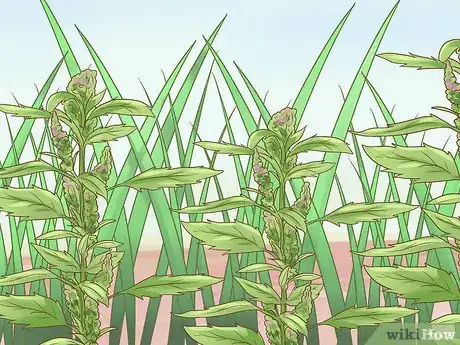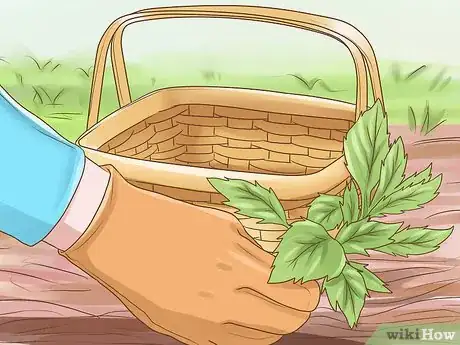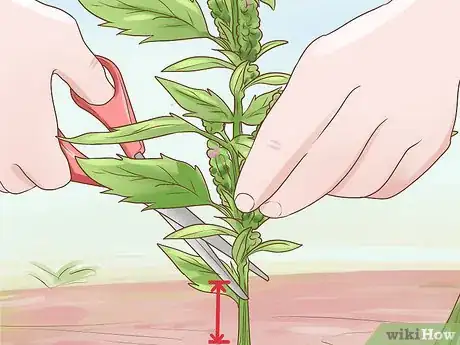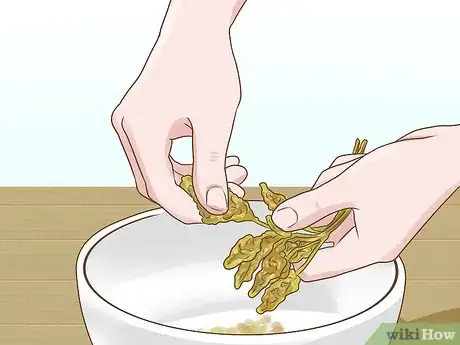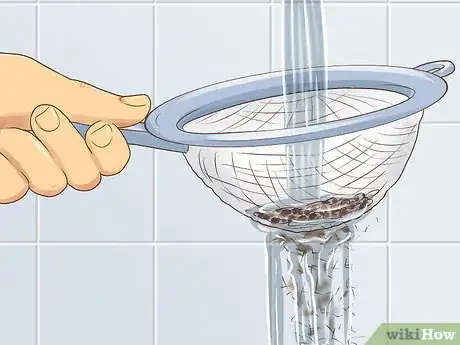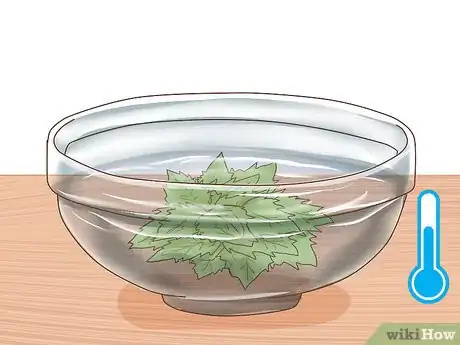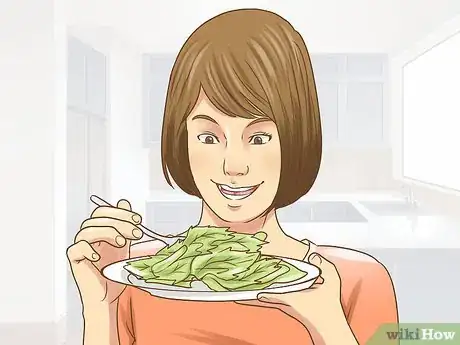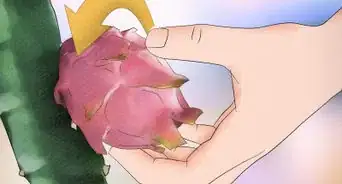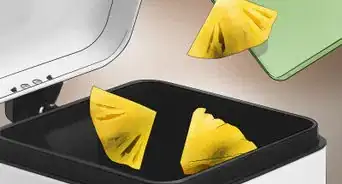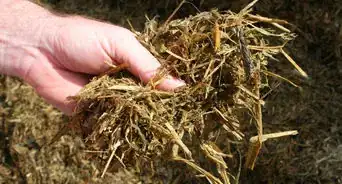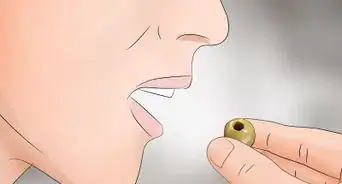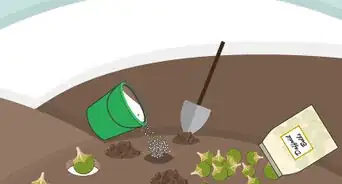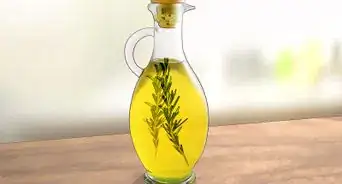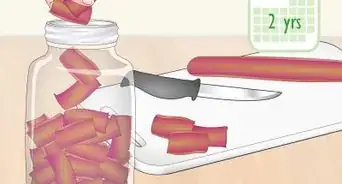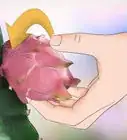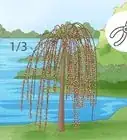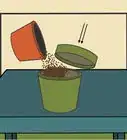This article was co-authored by Lauren Kurtz. Lauren Kurtz is a Naturalist and Horticultural Specialist. Lauren has worked for Aurora, Colorado managing the Water-Wise Garden at Aurora Municipal Center for the Water Conservation Department. She earned a BA in Environmental and Sustainability Studies from Western Michigan University in 2014.
There are 13 references cited in this article, which can be found at the bottom of the page.
This article has been viewed 14,727 times.
Lamb’s quarters is the common name for Chenopodium album, a fast-growing type of herbaceous plant that springs up all over North America, Europe and Central Asia. Though it’s often mistaken for a weed, lamb’s quarters has historically been foraged and cultivated as a source of food. If you’re interested in harvesting lamb’s quarters to use as a natural ingredient in your own kitchen, it will help to know how to properly pick and prepare the plant, as well as some of the best places to look.
Steps
Finding Lamb's Quarters in the Wild
-
1Know how to spot lamb’s quarters. Lamb’s quarters is identifiable by its bushy leaves and slender, upright seed heads, which make it easy to distinguish from ordinary weeds. These seed heads emerge from the center of mature plants with the foliage bunched together closer to the ground. The light green and white leaves on lamb's quarters are goosefoot shaped when they're younger, and grow to be diamond shaped as they age.[1]
- You can sometimes determine the age of the plant by examining its stem—young stems are green and firm to the touch, while older stems often start to develop a reddish or purple coloration.
- The plant is most abundant in the warmer months of late spring to early fall.[2]
-
2Look for lamb’s quarters in places with lush growth. Conduct your search in open fields, on cultivated lands and among thick wild grasses. Pay special attention to the spaces between other flowering plants. Lamb’s quarters is remarkably common in temperate climates, so there’s a good chance you may even be able to find some growing in your backyard. [3]
- Lamb’s quarters plants favor sunlight, and will often be found just outside tree-lines and in bare, unshaded patches of earth.
- Look closely to make sure that what you’ve found is lamb’s quarters and not another inedible species of weed.[4]
Advertisement -
3Forage wild-growing plants only. Avoid gathering plants in commercial and residential areas that might have been sprayed with pesticides or fertilizer. These may contain traces of harmful chemicals that can make you very sick should you ingest them. It’s safest to stick to herbs that you come across in secluded, out of the way areas.[5]
- Steer clear of plants that you find sprouting in or near mulch or manure.
- It’s not recommended that you attempt to grow lamb’s quarters yourself. Since it’s an invasive species, it can quickly overtake your yard or garden and may be difficult to get rid of.[6]
Picking Lamb's Quarters
-
1Pull the leaves off at the stem. Stoop down to get closer to the leaves at the base of the plant. Holding the stem with one hand, use the fingers of your other hand to gently pluck the leaves free. Be careful not to tear or otherwise damage the leaves while you’re gathering them.[7]
- Bring a basket, bucket or plastic bag along with you to collect the leaves you harvest.
- Lamb’s quarters leaves tend to be small and will shrink up even more when cooked. If you’re planning on serving or storing them in bulk, you’ll want to gather as many as you can find.
-
2Cut and collect the stems. You can also take a few stems with you so that none of the plant goes to waste. Snip the stems a few inches from the soil with a pair of sharp scissors. Trim the smaller offshoots from the stems and scrub them lightly with your fingertips under a stream of cool water to clean them.[8]
- The stems can be prepared by steaming, boiling or sautéing. When cooked, they have a hearty crunch similar to romaine hearts or broccoli florets.
-
3Remove the seed heads carefully. The tall, thin stalks of fully grown plants produce a grain that’s similar to quinoa. To harvest this grain, simply bend the seed heads over your bucket or bag and give them a good shake. Most of the mature seeds should fall right out. The rest can be pulled free by hand.[9]
- Pass up seed heads if they’re green or appear especially small. They’re likely still too young to be any good.
- Lamb’s quarters seeds range in color from a light tan to deep brown or black shades.[10]
Cleaning and Storing Lamb's Quarters
-
1Remove the chaff from the seeds. Some of the seeds will likely still be covered with bits of thin, papery husk. Clear this away by transferring the seeds to a colander or wire strainer and running a stream of water over them. Afterwards, the grain can be eaten or processed safely.[11]
- To free grains that are still enclosed, crush the seed head between two fingers, then brush away the rest of the chaff and rinse thoroughly.
- Scrub away dirt, debris and any insects that might have made their home inside the seed heads.
-
2Wash the leaves by soaking them. Because of the natural powdery residue clinging to the leaves of lamb’s quarters, a quick rinse won’t be enough to clean them. Instead, place them in a shallow bowl and pour in enough cold water to completely cover them. Swish the leaves through the water a few times, then take them out and shake off the excess moisture.[12]
- Pick out and dispose of any leaves that are slimy or mottled.
- If you’re planning on cooking with the herb right away, press the leaves between a layer of paper towels to wick away as much water as you can.
-
3Use lamb’s quarters immediately after picking. The leaves will best when eaten right away, while they’re still fresh. Steam or saute them until they just begin to wilt, or enjoy them raw in a salad of seasonal vegetables. They have a mild and slightly sweet flavor that lends itself well to a variety of soups, stir fries and side dishes.[13]
-
4Store fresh lamb’s quarters in a cool, dry place. If you have an unused portion, you can preserve them the way you would spinach or other leafy greens. Wrap them loosely in a plastic bag or layer of paper towels and stow them away in the crisper drawer of your refrigerator. The seeds can be stored in a lidded container or airtight plastic bag until you’re ready to use them.[16]
- Try to use up the leaves within 3-5 days of bringing them home.
- You could also freeze the leaves immediately after washing them. Frozen greens will stay fresh for up to a year.[17]
Warnings
- Lamb’s quarters are high in oxalic acid, a substance that can interfere with the absorption of nutrients in high concentrations. For this reason, it might be wise to limit your intake of the herb if you have a vitamin deficiency or you’ve been prescribed a special diet.⧼thumbs_response⧽
- Not all types of plants are safe to eat. Familiarize yourself with the appearance of lamb’s quarters so you’ll know you’re gathering the right thing.⧼thumbs_response⧽
Things You'll Need
- Basket, bucket or bag for collecting
- Scissors
- Colander or wire strainer
- Shallow bowl
- Paper towels
- Plastic bag
- Refrigerator
References
- ↑ http://www.mofga.org/Publications/MaineOrganicFarmerGardener/Summer2011/Lambsquarters/tabid/1929/Default.aspx
- ↑ http://natures-restaurant-online.com/LambsQuarters.html
- ↑ http://commonsensehome.com/lambs-quarters/
- ↑ http://www.ediblewildfood.com/lambs-quarters.aspx
- ↑ http://www.theprairiehomestead.com/2012/07/when-life-gives-you-weeds-eat-em-or-what-to-do-with-lambs-quarters.html
- ↑ http://www.mofga.org/Publications/MaineOrganicFarmerGardener/Summer2011/Lambsquarters/tabid/1929/Default.aspx
- ↑ http://sustainablefoodcenter.org/latest/gardening/the-weed-that-wasnt-lambsquarters
- ↑ http://preparednessadvice.com/food_storage/lambs-quarter-a-great-edible-plant/
- ↑ http://natures-restaurant-online.com/LambsQuarters.html
- ↑ http://commonsensehome.com/lambs-quarters/
- ↑ http://wildfoodshomegarden.com/LambsQuarters.html
- ↑ http://www.sacredearth.com/ethnobotany/foraging/lambsquarters.php
- ↑ http://www.motherearthnews.com/real-food/seasonal-recipes/lambsquarter-ze0z1412zcgp?pageid=1#PageContent1
- ↑ https://greatist.com/health/best-greens-spinach-recipes-100713
- ↑ http://natures-restaurant-online.com/LambsQuarters.html
- ↑ https://wholenewmom.com/kitchen-tips/store-leafy-greens-best-way-to-store-leafy-greens/
- ↑ http://jennifercooks.com/how-to-freeze-greens-collards-mustard/

